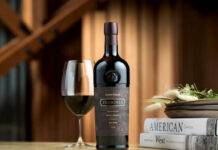If the approach is right, the rewards can be plenty
WHETHER it’s due to people giving up alcohol for ‘dry January’, or just living healthier, soft drinks are said to have a bigger footprint in the licensed trade than ever before. 
And while it has undoubtedly hurt sales of alcohol across the Scottish trade, the lower drink drive limit is also said to have stimulated sales of soft drinks.
“Consumers are very aware of the lower drink drive limits and the potential consequences for the next day if they are driving and this is having a positive impact on sales of soft drinks,” said Adrian Troy, marketing director at AG Barr.
Even with external factors helping to drive up sales, licensees should avoid complacency when it comes to soft drinks.
Claiming a significantly larger number of consumers are drinking soft drinks than even a year ago, Justin Horsman of Global Brands – the firm behind the Franklin & Sons range – encouraged licensees to give serious consideration to the products they are stocking.
“With one in five adults choosing not to drink alcohol, consumers still want to feel as if they are receiving a sophisticated option if they decide they are not drinking,” said Horsman.
This was supported by Dan Harwood, head of wine education for Eisberg Alcohol Free Wine, who said: “On any social occasion, there is likely to be a non-drinker or someone who is going ‘dry’ for a spell.
“However, people choosing not to drink alcohol for whatever reason, doesn’t mean they stop socialising or seeing friends.
“At Christmas and new year, especially, non-drinkers are increasingly looking for exciting alternatives to fizzy pop or water so that they feel part of the festivities.”
And more premium products are apt to command higher price points at the bar.
“Seven out of ten adults are paying for better quality soft drinks with natural innovative flavour combinations,” said Horsman at Global Brands.
With customers seeking out different flavour profiles in drinks, more licensed premises are said to be including mocktails on their drinks menus – particularly around the festive season.
“Mocktails are becoming an increasingly popular non-alcoholic option as people look for a more indulgent soft drink, creating a great opportunity for licensees to increase soft drinks sales during the party season,” said Amy Burgess, trade communications manager at Coca-Cola European Partners (CCEP).
“Licensees can get inventive with mocktails by utilising interesting flavours from adult soft drink brands like Appletiser and Schweppes, to keep their offering fresh and exciting.
“With 29% of people claiming they would consider ordering a mocktail if offered, they represent a significant opportunity for operators looking to maximise their sales.”
Presentation is one of the most important factors in positioning a soft drinks offer as premium, according to Russell Kirkham, senior shopper marketing manager for the out of home sector at Britvic Soft Drinks.
“Presentation should not be forgotten; interesting glassware and garnishes are small investments in time and money which can really help to enhance the drinker’s experience and inspire repeat purchase within large groups in particular, so make sure your bar is stocked with fresh fruit and seasonal herbs such as nutmeg and cinnamon sticks to add theatre to your serves,” said Kirkham.
“If a consumer sees their friend drinking a mixed drink or cocktail that is presented beautifully, they’re much more likely to order one for themselves at the next round.”
Food matching is also said to be an effective way to grow soft drinks sales in outlets.
Kirkham said that matching particular soft drinks with dishes “can help drive interest from consumers to make their visit more of an occasion”.
“Offer special promotions and deals on meals or bar snacks and nibbles to drive footfall, maximising your soft drink sales,” he said.
And Burgess, at CCEP, said pairing food with soft drinks “can have a huge impact on sales, and research commissioned by CCEP shows that if each person at a table of four orders two additional drinks, the total bill can increase by an average 43.7%”.



















